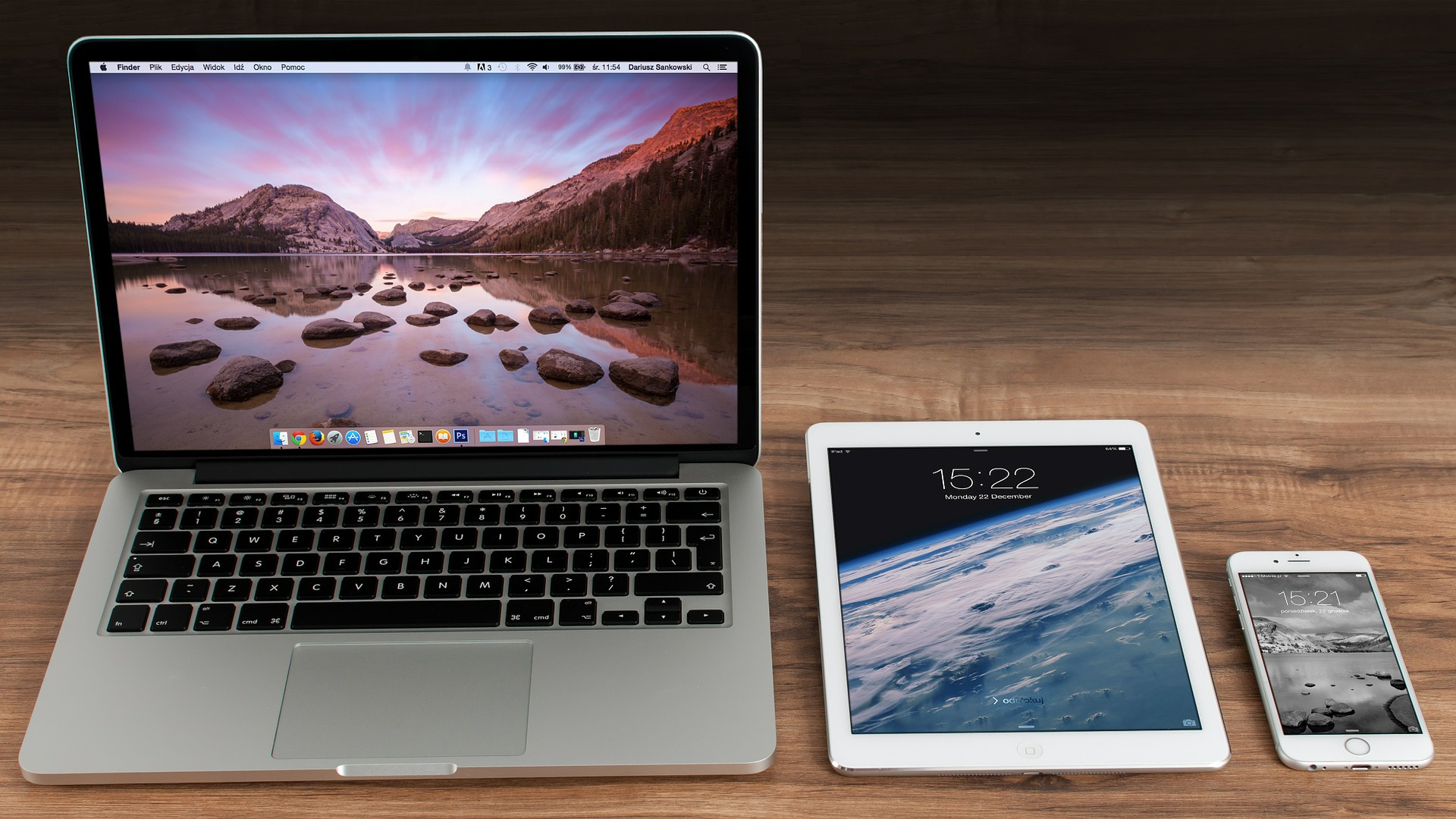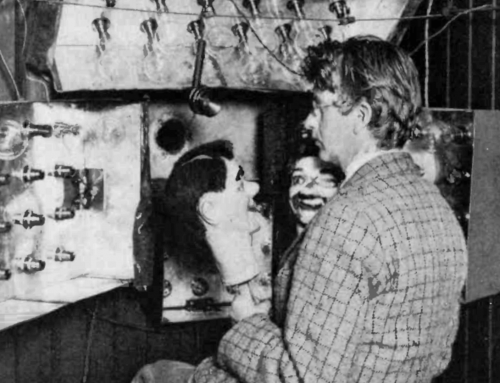Whenever people think of Apple, they think shiny, good looking technology that mostly works and is easy to use, either through their Macintosh computers or shiny touch screen iPhones and iPads. The latter in particular has been such a success that smartphones and tablets are sometimes simply exclusively called iPhones or iPads, built on simple, gesture-based controls and easy portability. This was not always the case, and the first time Apple tried to make an iPad it nearly drove the company to bankruptcy, and symbolised everything Apple needed to change in order to survive in a world dominated by one company and one type of computer.
The Poisoned Apple
The first thing that needs to be known about Apple in this period is that late CEO and creative lead Steve Jobs was not there. Jobs and co-founder Steve Wozniak had both left, and whilst the latter left more for creative and business differences, Jobs was ousted as part of a power struggle between himself and John Scully, then-CEO of Apple. Jobs spearheaded a lot of creative, ambitious and expensive projects, including the innovative but woefully unreliable Apple III (a computer that overheated so badly, official technical support was to drop the computer onto your desk), the Apple Lisa (a computer so ahead of its time and so insanely expensive only NASA ever used it), and the Apple Macintosh.
The original Mac was eventually a hit, helped by an easy to use interface, iconic design and the single greatest advert ever made. It was directed by Ridley Scott and only officially shown once (During Superbowl XVIII in 1984). The very first Mac wasn’t as expensive as the Lisa but until the release of desktop publishing program Pagemaker, it was considered too expensive and did not initially sell very well. Scully was increasingly frustrated by Jobs’ expensive gambles in new markets that sometimes took a very long time to pay off, and the board of directors instructed Scully to “contain” Jobs. Jobs’ response was an attempted coup to oust Sculley from leadership, which led to Jobs losing all managerial duties, effectively forcing his resignation.
Without Jobs, Apple fluctuated very badly, with a mentality geared towards high price points and extremely high profit margins (a strategy known internally as “fifty-five or die”). It backfired before the end of the decade, as the launch of Microsoft Windows and the rise of IBM PC-clones meant that people could get comparable features for a lot less money, which led to yet another management shakeup.
A Bobbing Apple
Apple managed to stem the bleeding with the release of a range of lower end Macintosh computers, but once that initial rush of sales had ended, Apple were in a worse position, made even worse by their attempts to distil their computers into three main brands for high, mid and low-end consumers, which only served to confuse people.
With PC clones taking Apple’s market share for everything but pre-existing power users, Sculley went for innovation again, which led to a wide range of very regrettable products, including set-top boxes, CD players, digital cameras and a video games console. Most of these were either rebadged versions of other devices or reused technology from other areas. The camera was from Kodak, the CD Player from Phillips. The games console was published by Bandai based on Macintosh technology and did phenomenally badly, and the Set Top box spent three years in development without a release. Above all of these, however, there was the Apple Newton.
Challenging Pen and Paper Itself
CEO John Scalley’s pet project, the Apple Newton coined the term Personal Digital Assistant and was designed to be a simple portable computer you could carry in your pocket and do business tasks as simply as getting out a notepad and writing. To this end, the Newton was designed to have a simple touch screen interface styled on a Filofax and advanced handwriting recognition unlike anything ever seen before. This aim to reinvent went as far as the coding itself. A whole new operating system and programming language were set to be made just for the Newton, designed around programming objects and intended to continue that easy to understand and use philosophy.
When it was first devised in 1987, it was set to use a brand new, completely different and completely revolutionary processor called the Acorn RISC Machine. You know it better as ARM, and almost every single tablet, smartphone and portable device use an ARM chip (or a very similar technology such as Intel Atom) to this very day. ARM is very powerful, very small and generates very little heat, however, to take full advantage of its power, you need to design machines and programs that take full advantage of its capabilities. This was something even Acorn themselves failed to do throughout their existence, but Apple’s Newton stepped up to the challenge of transforming computing forever.
An Apple Eating Itself
Briefly at least. Dylan, the programming language intended to be used with Newton, was ambitious in scope but ultimately was never good enough to actually make any programs for Newton. In the end, a second dedicated language called NewtonScript was made, which worked fine as far as personal organisers go, but was not even close to transforming computing or how programs were made. It was seen within Apple itself as a diversion at best or yet another case of Apple eating itself with products competing with each other, so the future of computing and over $100 million in research and development had resulted in a glorified personal organiser.
That said it could have still been successful. Despite PDAs already existing as a concept since 1984, the name hadn’t been coined yet, and the devices that did exist acted more like more expensive personal organisers. No PDA system had ever caught on up to that point, but with Apple’s reputation for innovation and a strong (and expensive) advertising blitz, potentially it could do what Psion, Tandy, Casio, HP, Sinclair and others had failed to do and compete with pen and paper itself.
It didn’t, but not necessarily because it was a bad idea. When the Newton line finally debuted in 1993 (six years after starting development) with the original MessagePad, it was considered groundbreaking and innovative, particularly with its handwriting recognition, simple gesture-based interface (crossing out a word would delete it, circling a word would select it and so on) and its early potential as shown in its wry advertising campaign highlighted it as a useful tool for quick communication. It released on 3rd August 1993 and sold 50,000 units in three months at a price of $900 per unit.
“Eat Up Martha”
This honeymoon period did not last long at all. If you know about the Newton at all, chances are you probably know it from the legion of jokes and parodies made about its handwriting. The biggest example of this is from an episode of animated comedy show The Simpsons from November 1993, where an attempt by one of the bullies to write a memo saying “Beat Up Martin” gets recognised as “Eat Up Martha”. This reputation stuck very quickly, dooming the Newton before it really got off the ground. It didn’t matter that the price went down, nor did it matter that the handwriting recognition improved greatly, especially once the second generation of Newton units hit the market in 1996. The Newton, outside of a core of devoted users, was seen as a comical failure. It became “Eat Up Martha”: a technological punchline that failed to solve a problem nobody seemed to need fixing.
Sculley did not get to see any of this play out of course. He was ousted just before the launch of the Newton after a series of very bad decisions, such as the porting of Macintosh to the PowerPC architecture leading to Macs being uncompetitive during a brutal personal computer price war against the dominant Wintel juggernaut. He was also responsible for the vast resources poured into the Newton as well as a number of very expensive unreleased projects.
An Apple Spiraling
His replacement, Michael Spindler, was a six foot tall, highly intelligent and hardworking strategist known as “Diesel”, known for bringing Apple’s computers to a number of overseas markets, but also suffered from such strong anxiety attacks that he would often hide under his desk or in wardrobes. This did not exactly make him well suited to be the head of a company as big as Apple, particularly at a time when they were struggling and needed a creative and forthright lead of the company.
Apple went from a mild profit in 1992 to losses in the hundreds of millions by late 1995. Spindler was ousted in early 1996, replaced by Gil Amelio, who was then axed in September 1997 to be replaced by Steve Jobs, president of NeXT computers, chairman of Pixar and one of the co-founders of Apple. Spindler would later pass away of illness in 2017 at the age of 74.
The Big Comeback
One of the first things Jobs would do when he returned as CEO was axe the Newton. He claimed it was simply for profitability reasons, although axing the pet project of the man who got him sacked a decade prior might not have been entirely for pragmatic reasons. He rubbished its failings and He would shift Apple’s focus to what it is today: innovative good looking devices that try to look to the future. This led to the popular iMac line of computers, which reversed the company’s fortunes, allowing them to reach for even bigger successes with the iPod, iPhone and iPad devices.
A lot of the later work Apple did with the iPhone and iPad owes a great debt to the Newton, despite Jobs’ clear contempt for it. The goal of intuitive touch screen devices and transforming computing did eventually get realised, first with Mac OS X (now macOS), and then with the iPhone and iPad. Eventually, these devices, along with Android-based smartphones would destroy the market for PDAs that Newton tried to build. Handwriting recognition was replaced by the even more ambitious objective of using voice recognition and intelligent user agents to simplify the process of using computers.
These days, following the death of Jobs, Apple has largely focused on its iPod and iPad products, the latter of which are available for rent at Fisher Audio Visual. Apple’s early yet misguided innovations cannot be forgotten, however; they served to nearly destroy the company, bring back the man who went on to save them from the brink and formed the concept for the product that would keep them thriving to this very day.
At Fisher Audio Visual, we combine our extensive experience in audiovisual equipment and event management with advanced technology and a commitment to excellence. We take pride in our expertise and endeavour to provide a one stop shop for everything you may need to make your event special. For more information about our range of services, contact us today.




